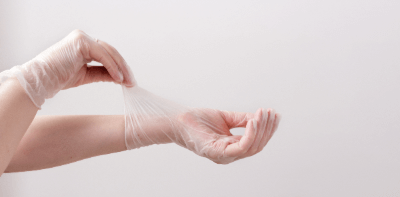What Is a PVC Glove?

PVC gloves, made from polyvinyl chloride, are recognized for their chemical resistance, making them suitable for handling various chemicals and solvents. Commonly used as disposable gloves due to their cost-effectiveness, these gloves facilitate precise work without restricting hand movement. It’s crucial to ensure proper fit to avoid damage, and disposal should comply with local regulations.
Uses of PVC Gloves
Applications include:
- Medical Care: Essential in preventing infections and ensuring safety during patient care and surgical procedures.
- Food Industry: Vital for maintaining food hygiene during preparation and serving, reducing the risk of contamination.
- Cleaning: Protects hands during cleaning tasks, improving efficiency and safeguarding against contaminants.
- Manufacturing: Offers protection during machine operation and handling of materials, ensuring worker safety.
- General Household: Useful for various household tasks, keeping hands clean and protected.
Principle of PVC Gloves
PVC gloves utilize polyvinyl chloride’s durability and chemical resistance, with the flexibility adjusted through plasticizers. While offering economic efficiency, especially in medical and food sectors, their solvent and heat resistance limitations necessitate careful selection based on the intended use.
How to Select PVC Gloves
Considerations include:
- Size: Proper fit is crucial to prevent slippage or damage. Sizes typically range from S to L, with variations among brands.
- Thickness: Available in various thicknesses, with the choice dependent on work requirements. Thicker gloves offer more durability, while thinner options provide greater flexibility.
- Disposable vs. Reusable: Disposable gloves offer convenience and hygiene, whereas reusable gloves, requiring maintenance, can be more economical over time.
- Powder-Free: Powder-free options are available for those with allergies or sensitivity to glove powder.